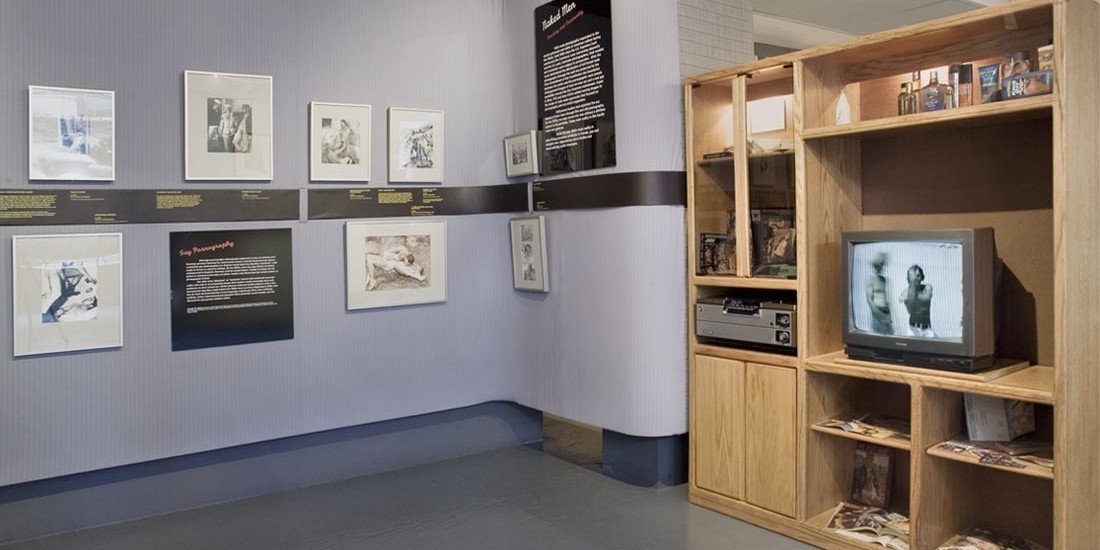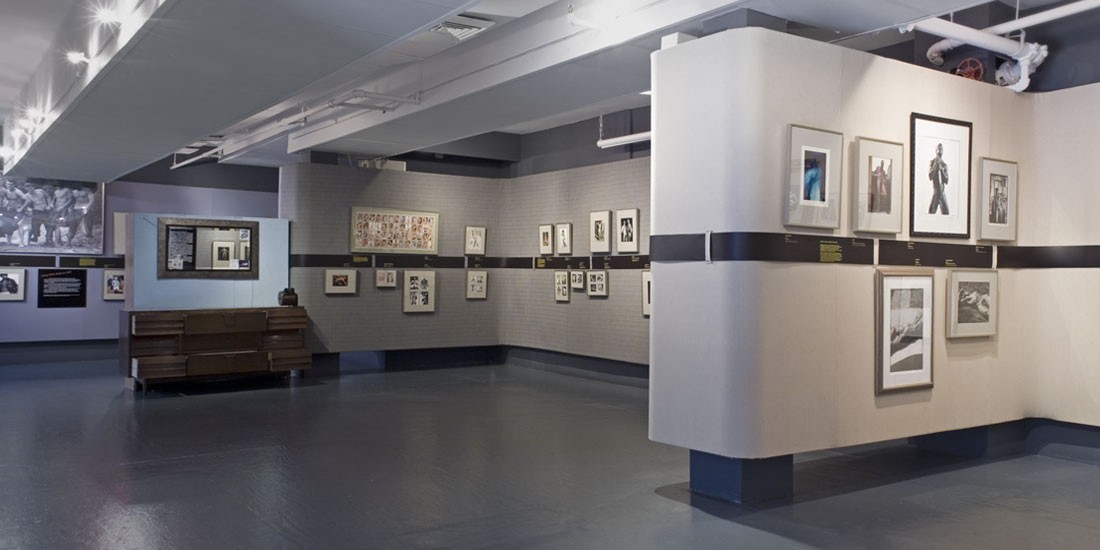Men Without Suits: Objectifying the American Male Body



Set against a timeline tracing male nude imagery from classical Greece to the 21st Century, Men Without Suits explored the impact of photography on American culture. Challenging the statement “Clothes make the man,” the exhibition uncovered the facades and persona created in our society with what men wear. Interestingly, it also revealed these guises continue when the clothes come off.
Who makes the images? What is their purpose? Who consumes them? Men Without Suits asked and answered these and many more questions, exploring the nature of male erotic appeal, the objectification of the male physique, and the notions of the male nude as both a fantasy and a commodity.
BEGINNINGS
From 5-4th B.C. Greeks and, later Romans celebrated the naked bodies of youthful athletes and mature philosopher kings. In the 14th and 15th centuries, Renaissance thinkers and artists viewed the human body as a reflection of divine perfection. Scientific study of anatomy and new drawing techniques created the need for live models. In the mid 18th and early 19th century, artists repositioned the Classical male nude as aesthetic and socially acceptable. New public museums and galleries collect and display Classical sculpture.
MALE BODY AS ART
Photographs for the masses drove the explosion of images of men without suits. In the 1870 and 80s, Baron von Gloeden and others promoted Mediterranean exoticism. In the 1890s, Koch and Rieth create studio artist tools in the 1890s. By the 1910s and 20s, Studio Arax in Paris and Edwin Townsend in New York, among others, developed an aesthetic for photographing the male nude, which was developed in the 1930s and 40s by George Platt Lynes. Photographers including Robert Mapplethorpe moved the male nude as art into mainstream culture, where it continues to be celebrated, and admired.
HEALTH AND NATURE
19th century physical culture inspired group participation in nudism and exercise, which was supported by magazines and books. Publicly displaying muscle mass enhanced by lifting weights launched many performing and competitive careers from Eugene Sandow in 1880s to Charles Atlas in the 1930s and 40s to Arnold Schwarzenegger in the 1970s. Pumping iron has infiltrated mainstream culture through Marvel comics, the World Wresting Federation and Hollywood action movies.
AMERICAN CENTURY BEEFCAKE
Americans turned beefcake photography into big business. In the 1930s and 40s, photographers convinced young body builders and athletes to pose nude. These photographers pushed the definition of obscenity by disseminated images through sales of photographs and a range of magazines. Male physique magazines served purposes other and the promotion of exercise and working out at the gym.
MALE NUDE IN THE MAINSTREAM
Social upheaval and cultural changes in the 1960s changed male nude photography. The boundaries between the erotic and the pornographic were erased as underground images of man-on-man sex and a gay sensibility moved into mainstream culture. Super 8, Beta, VHS and DVDs added movies to the range of male nude expression. While pornography raised awareness of male bodies, male nude images permeate advertising, the music industry and the movies. Beginning in the 1930s no male star was without a shirtless picture for his portfolio. Rockers and rappers have groomed bad boy images by stripping. Today male nudes help position products for female and gay and straight males.
CURATORIAL
John E. Vollmer
Curator
Sarah Jacobs
Assistant Curator
Karen Eckhaus
Research
DESIGN
Casson Mann Design
Conceptual Design
Charles Gansa
Video/Audio Production
Kimberly McClelland
Video/Audio Production Assistant
Jim Richards, Temple Construction
Installation Assistance
LENDERS
Dennis Bell, Athletic Model Guild
BigKugels.com
David Chapman
David Leddick
Vintagenudephotos.com
ADVISORS
David Chapman
Jim Kempster
David Leddick
Robert Loncar
Mark Rotenberg
Tim Wilber